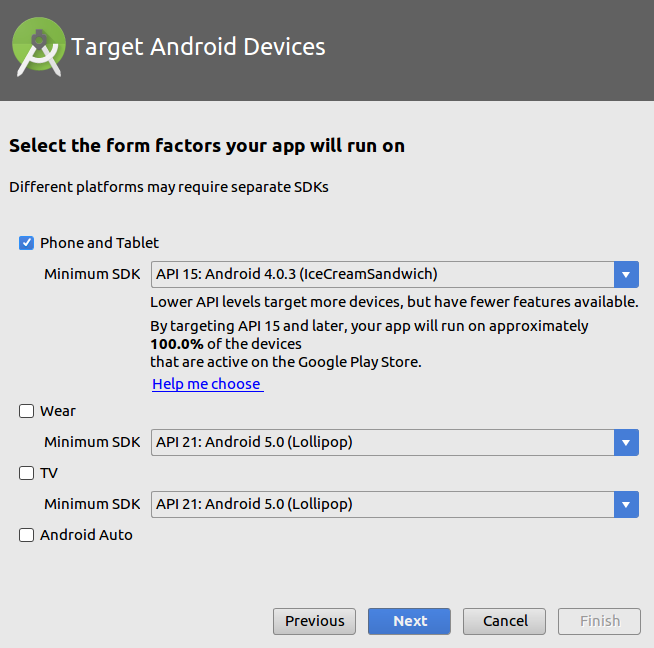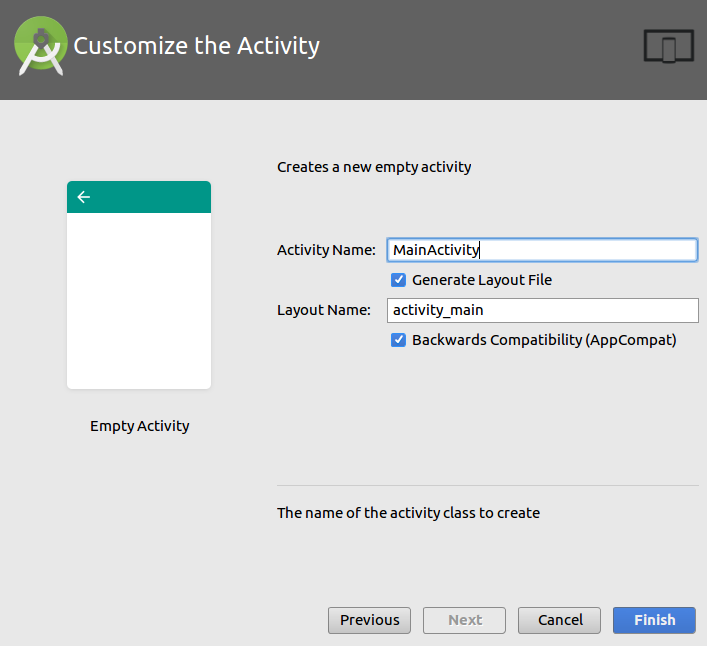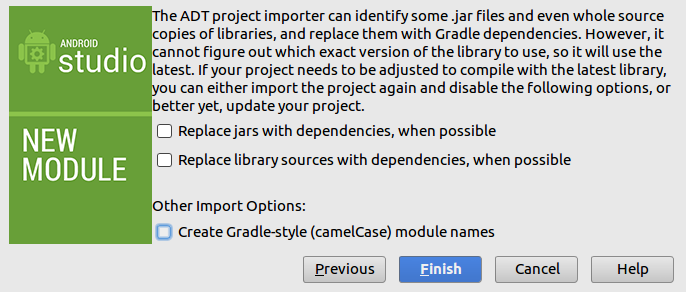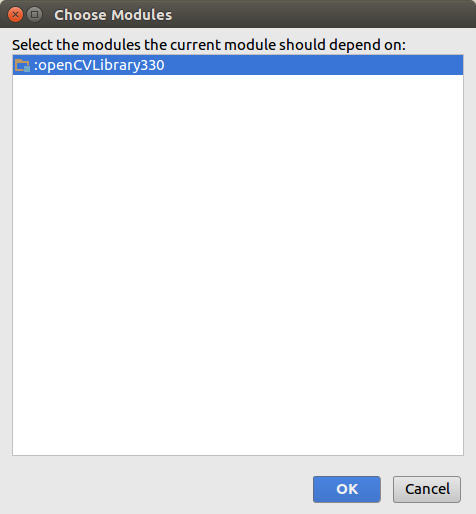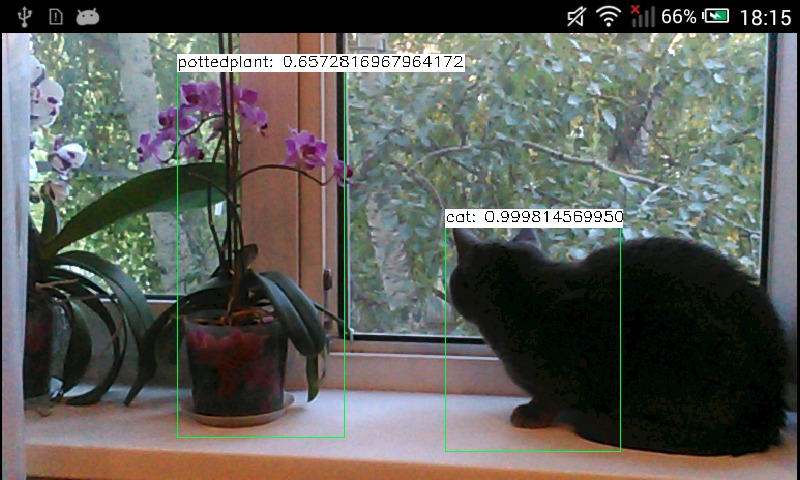dnn_android.markdown 3.7 KB
How to run deep networks on Android device {#tutorial_dnn_android}
@prev_tutorial{tutorial_dnn_halide_scheduling} @next_tutorial{tutorial_dnn_yolo}
| | | | -: | :- | | Original author | Dmitry Kurtaev | | Compatibility | OpenCV >= 3.3 |
Introduction
In this tutorial you'll know how to run deep learning networks on Android device using OpenCV deep learning module.
Tutorial was written for the following versions of corresponding software:
- Android Studio 2.3.3
- OpenCV 3.3.0+
Requirements
Download and install Android Studio from https://developer.android.com/studio.
Get the latest pre-built OpenCV for Android release from https://github.com/opencv/opencv/releases and unpack it (for example,
opencv-4.X.Y-android-sdk.zip).Download MobileNet object detection model from https://github.com/chuanqi305/MobileNet-SSD. We need a configuration file
MobileNetSSD_deploy.prototxtand weightsMobileNetSSD_deploy.caffemodel.
Create an empty Android Studio project
Open Android Studio. Start a new project. Let's call it
opencv_mobilenet.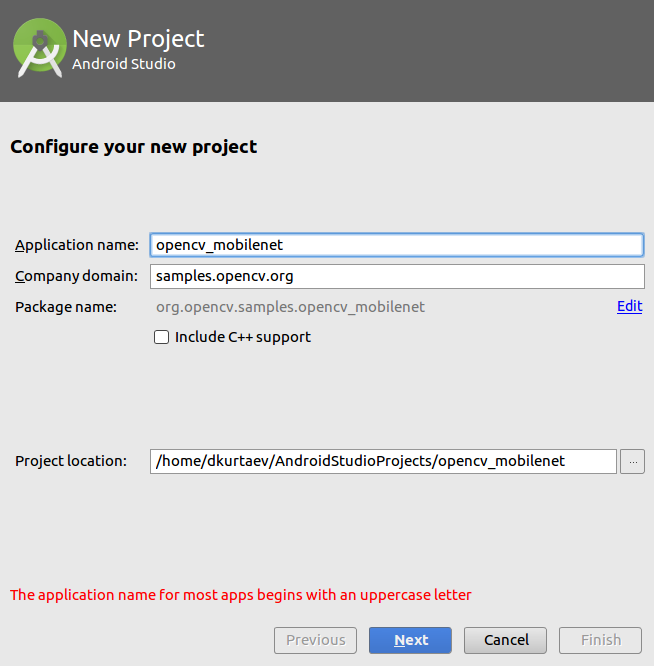
Use "Empty Activity" template. Name activity as
MainActivitywith a corresponding layoutactivity_main.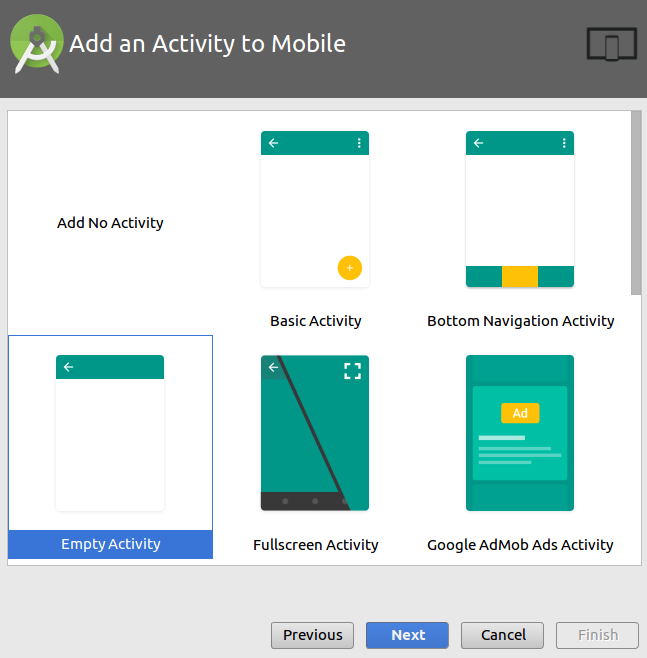
- Wait until a project was created. Go to
Run->Edit Configurations. ChooseUSB Deviceas target device for runs. Plug in your device and run the project. It should be installed and launched
successfully before we'll go next.
@note Read @ref tutorial_android_dev_intro in case of problems.
Plug in your device and run the project. It should be installed and launched
successfully before we'll go next.
@note Read @ref tutorial_android_dev_intro in case of problems.
Add OpenCV dependency
- Go to
File->New->Import moduleand provide a path tounpacked_OpenCV_package/sdk/java. The name of module detects automatically. Disable all features that Android Studio will suggest you on the next window.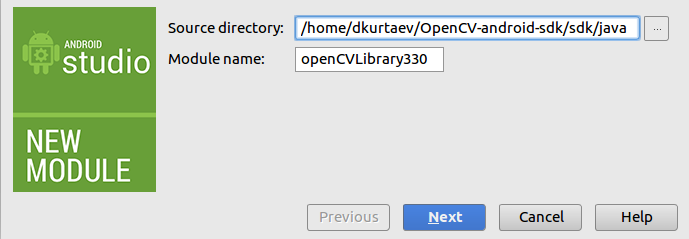
Open two files:
AndroidStudioProjects/opencv_mobilenet/app/build.gradleAndroidStudioProjects/opencv_mobilenet/openCVLibrary330/build.gradle
Copy both compileSdkVersion and buildToolsVersion from the first file to
the second one.
compileSdkVersion 14 -> compileSdkVersion 26
buildToolsVersion "25.0.0" -> buildToolsVersion "26.0.1"
Make the project. There is no errors should be at this point.
Go to
File->Project Structure. Add OpenCV module dependency.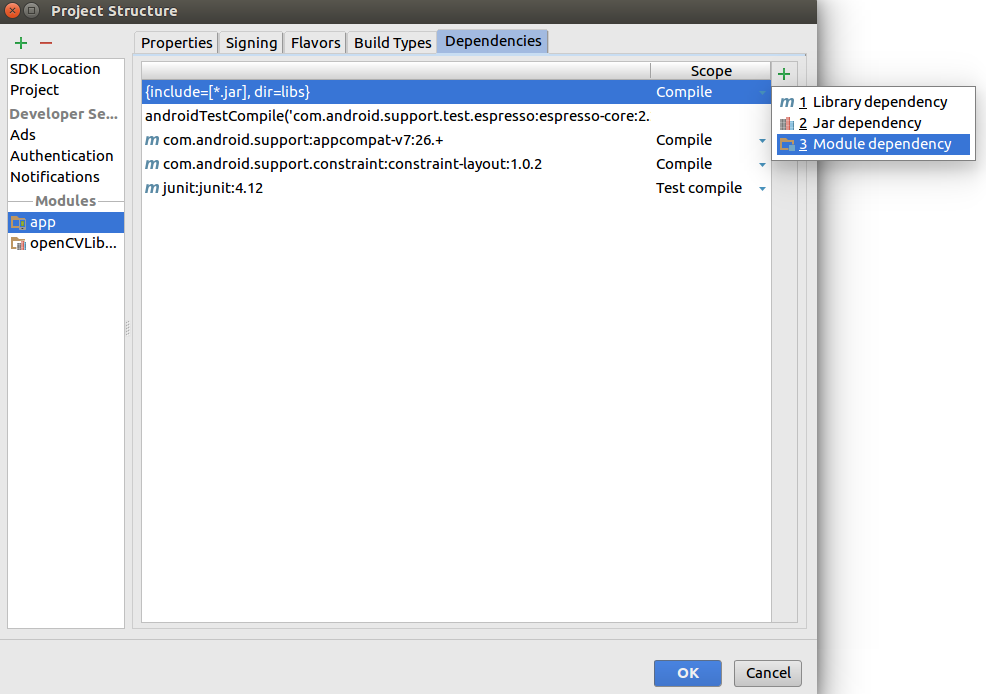
Install once an appropriate OpenCV manager from
unpacked_OpenCV_package/apkto target device. @code adb install OpenCV_3.3.0_Manager_3.30_armeabi-v7a.apk @endcodeCongratulations! We're ready now to make a sample using OpenCV.
Make a sample
Our sample will takes pictures from a camera, forwards it into a deep network and
receives a set of rectangles, class identifiers and confidence values in [0, 1]
range.
First of all, we need to add a necessary widget which displays processed frames. Modify
app/src/main/res/layout/activity_main.xml: @include android/mobilenet-objdetect/res/layout/activity_main.xmlPut downloaded
MobileNetSSD_deploy.prototxtandMobileNetSSD_deploy.caffemodelintoapp/build/intermediates/assets/debugfolder.Modify
/app/src/main/AndroidManifest.xmlto enable full-screen mode, set up a correct screen orientation and allow to use a camera. @include android/mobilenet-objdetect/gradle/AndroidManifest.xmlReplace content of
app/src/main/java/org/opencv/samples/opencv_mobilenet/MainActivity.java: @include android/mobilenet-objdetect/src/org/opencv/samples/opencv_mobilenet/MainActivity.java
